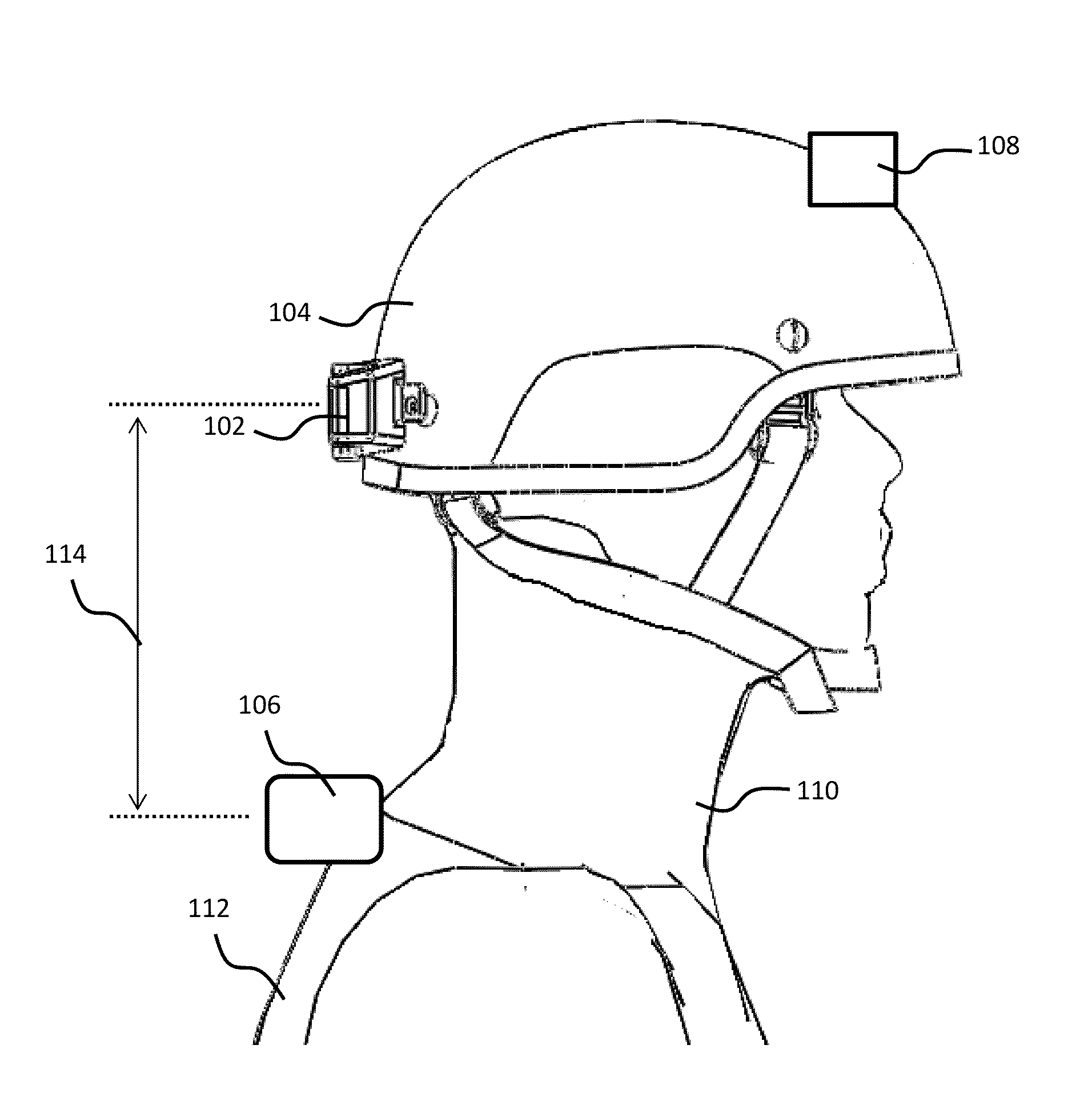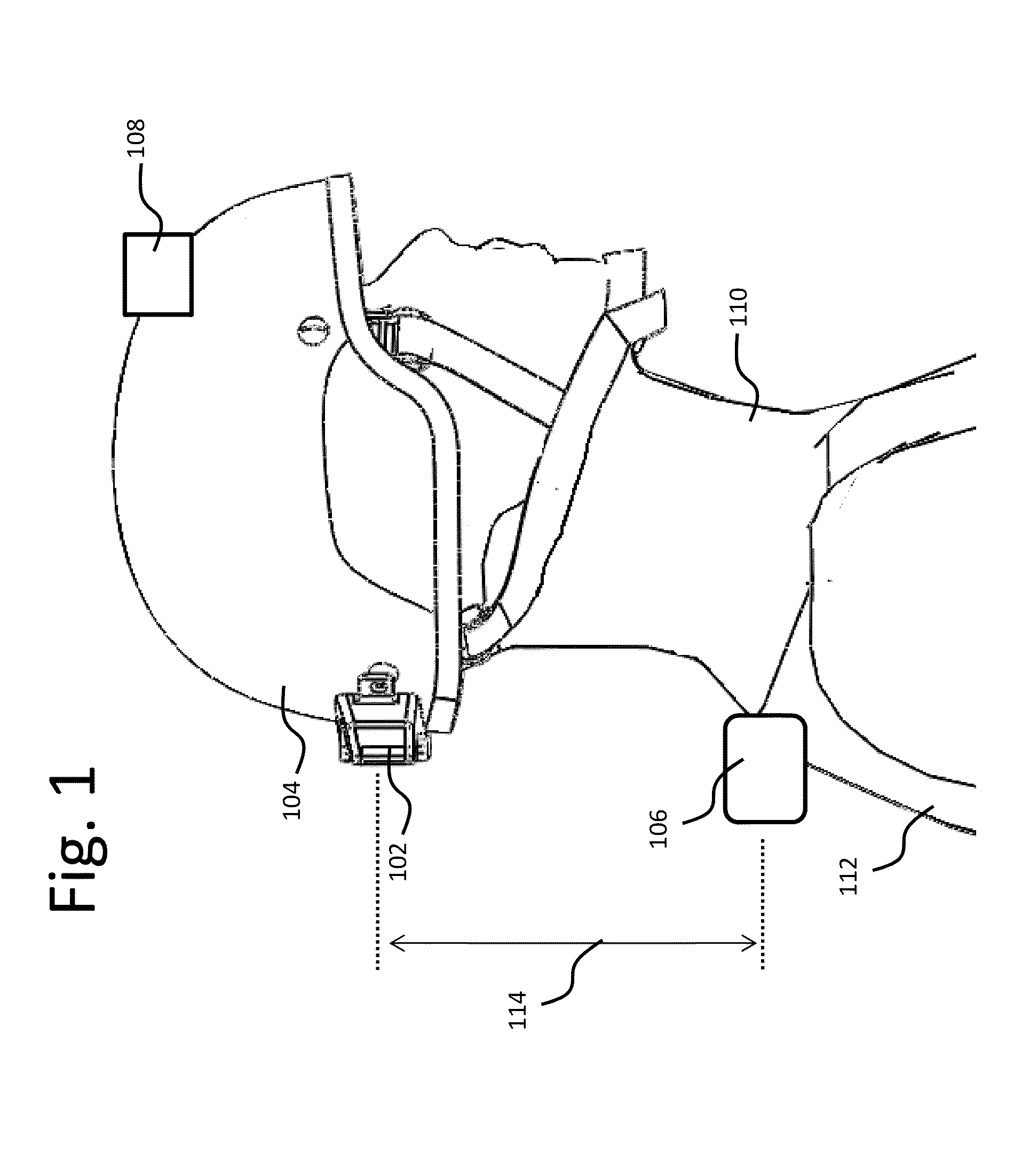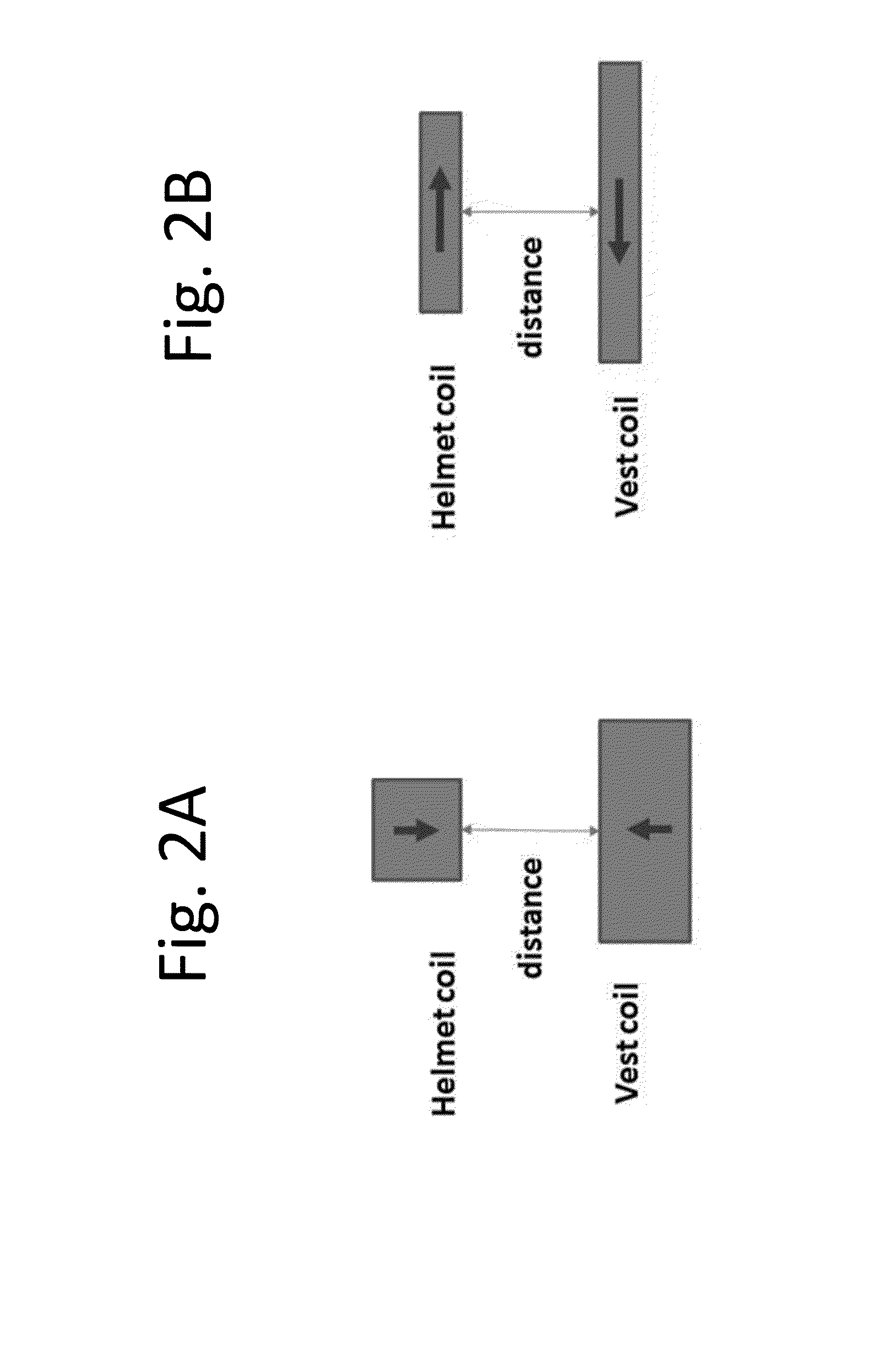Wireless energy transfer for person worn peripherals
a peripheral and wireless technology, applied in the direction of transformers, inductances, protective garments, etc., can solve the problems of increased burden of carrying, operating and maintaining multiple batteries, fuel cells, and the like, and user's carrying energy is underutilized, and may be carrying too much battery or stored energy capacity,
- Summary
- Abstract
- Description
- Claims
- Application Information
AI Technical Summary
Benefits of technology
Problems solved by technology
Method used
Image
Examples
Embodiment Construction
[0023]A wireless energy transfer system may be used to wirelessly transfer energy from one or more central batteries and / or fuel cells and / or solar panels and / or other types of energy packs worn on a vest, backpack, harness, shirt, pant, belt, coat, or any type of clothing and the like, to a head worn or helmet mounted electric or electronic device. The wireless energy transfer system may use strongly-coupled magnetic resonators. The resonators may have a high quality factor Q>100. The two resonators exchanging energy by have sqrt(Q1Q2)>100. The system comprises at least one wireless energy source resonator, which might be embedded or attached to the user's equipment, clothing, vest, backpack and the like. The source resonator generates an oscillating magnetic field which may be received by one or more energy capture device resonators which may be integrated with the helmet or device. In embodiments 5 watts or more of power may be transferred across a gap of 10 cm or 18 cm or more f...
PUM
 Login to View More
Login to View More Abstract
Description
Claims
Application Information
 Login to View More
Login to View More - R&D
- Intellectual Property
- Life Sciences
- Materials
- Tech Scout
- Unparalleled Data Quality
- Higher Quality Content
- 60% Fewer Hallucinations
Browse by: Latest US Patents, China's latest patents, Technical Efficacy Thesaurus, Application Domain, Technology Topic, Popular Technical Reports.
© 2025 PatSnap. All rights reserved.Legal|Privacy policy|Modern Slavery Act Transparency Statement|Sitemap|About US| Contact US: help@patsnap.com



